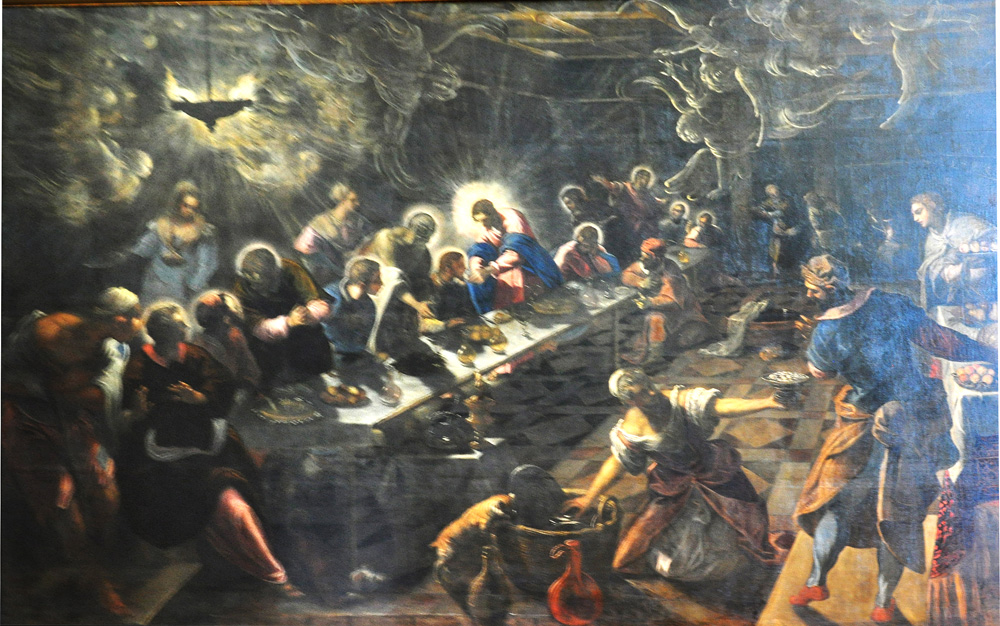Jacopo Tintoretto, The Last Supper

1594
Oil on canvas
Church of San Giorgio Maggiore, Venice
In the center of the painting Jesus gives a piece of bread to one of the apostles in the manner of a priest administering communion in the medieval Mass. This is a common trope for medieval images of the Last Supper, but Tintoretto expands it into an excursus on the meaning of Communion by involving all God's creatures: the angels above, the washerwoman and her associates below, and even a cat.
Yet this universality is grounded in the concrete conditions of life in the artist's time and place. The washerwoman strongly resembles the plague victim with the bubo on her thigh in Tintoretto's
The Probatic Pool, even to the arms-out gesture and the little white bonnet. Also compare the woman among the infirm who gather around the table in his
Last Supper at Santo Stefano — same arms-out gesture, same blonde hair (though without a bonnet), same décolletage. The woman Jesus addresses in The Probatic Pool replaces the man in the gospel account. She is clearly a "concrete universal," representing the city of Venice, which was suffering from bubonic plague at exactly the time that the painting was created.
View this image in full resolution.
Read more about images of the Last Supper.
Photographed at the church by Richard Stracke, shared under Attribution-NonCommercial-ShareAlike license.